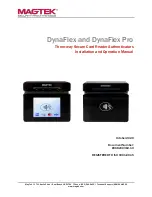
User’s Guide Hammerfall DSP MADI
© RME
36
19. SteadyClock
The Hammerfall DSP MADI's SteadyClock technology guarantees an excellent performance in
all clock modes. Its highly efficient jitter suppression refreshes and cleans up any clock signal,
and provides it as reference clock at the word clock output.
SteadyClock has been originally
developed to gain a stable and clean
clock from the heavily jittery MADI data
signal. The embedded MADI clock
suffers from about 80 ns jitter, caused
by the time resolution of 125 MHz within
the format. But common jitter values for
other devices are 5 ns, while a very
good clock will have less than 2 ns.
The picture to the right shows the MADI
input signal with 80 ns of jitter (top
graph, yellow). Thanks to SteadyClock
this signal turns into a clock with less
than 2 ns jitter (lower graph, blue). The
cleaned and jitter-freed signal can be
used as reference clock for any
application, without any problem. The signal processed by SteadyClock is of course not only
used internally, but also available at the card's word clock output.
20. Hotline - Troubleshooting
20.1 General
The newest information can always be found on our website
www.rme-audio.com
, section FAQ,
Latest Additions.
The input signal cannot be monitored in real-time
•
ASIO Direct Monitoring has not been enabled, and/or monitoring has been disabled globally.
Playback works, but record doesn’t:
•
Check that there is a valid signal at the input. If so, the current sample frequency is
displayed in the Settings dialog.
•
Check whether the Hammerfall DSP has been selected as recording device in the audio
application.
•
Check whether the sample frequency set in the audio application (‘Recording properties’ or
similar) matches the input signal.
•
Check that cables/devices have not been connected in a closed loop. If so, set the
systems’s clock mode to ‘Master’.





































